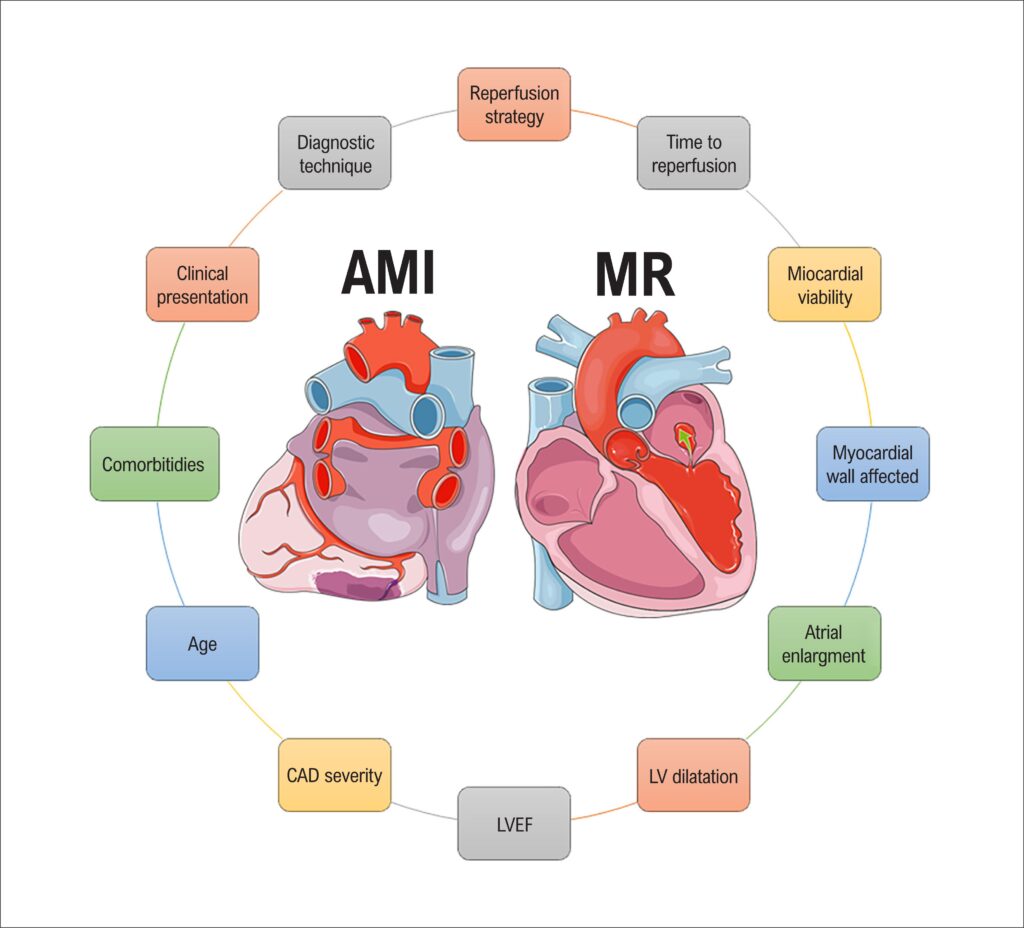Arq. Bras. Cardiol. 2025; 121(12): e20240707
Mitral Regurgitation after Acute Myocardial Infarction: A Multi-Faceted Condition
This Short Editorial is referred by the Research article "NSTEMI and Ischemic Mitral Regurgitation: Incidence and Long-Term Clinical Outcomes with Respect to Management Strategy".
There are two leading causes of mitral regurgitation (MR) after acute myocardial infarction (AMI). First, the partial or complete papillary muscle rupture leads to MR; in this case, surgical repair is mandatory. Fortunately, the prevalence of this condition is low, around 0.05%. Second, the valve and the subvalvular apparatus are normal, and the MR results from leaflet tethering and regional left ventricular dilatation. The primary mechanism is the separation and excess angulation of the papillary muscle related to the regional wall motion in the myocardial infarction area. This second presentation is called the “functional” phenotype. This functional MR is a common echocardiographic finding after AMI. A recent investigation showed a mild MR in 76%, moderate MR in 21%, and severe MR in 3% of the patients after AMI. Vyas et al. found a significant MR (moderate + severe) prevalence of 7.21% after non-ST elevation myocardial infarction (NSTEMI). An important aspect to highlight is that most previous studies analyzed MR prevalence in all types of myocardial infarction together or ST-elevation AMI alone. The actual prevalence of MR in NSTEMI was unknown, and this study showed a considerable MR prevalence in this setting.
According to other previous studies,, this recent investigation showed that significant MR worst the patients’ prognosis, increasing the risk of death, pulmonary edema, heart failure, and cardiogenic shock. There are no doubts about the clinical impact of the MR after AMI. The more significant problem is that the mortality associated with this complication has not changed for decades, and there are still many doubts about the better management of these patients. Another feature deserves to be commented on: the clinical repercussions of severe MR are much more documented than those of moderate MR, and this classification is critical in making decisions about the treatment. In this recent investigation, the researchers analyzed the moderate and severe MR together, called significant MR; it was understandable because of the small sample size of severe MR; however, in the clinical setting, these two classifications have entirely different outcomes during the follow-up.
[…]
527

